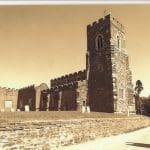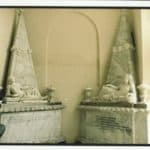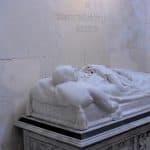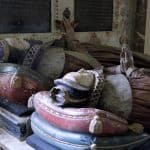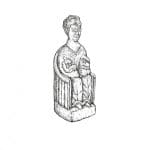Ever wondered...?
Why are there railway lines on Flitwick Moor?
Did Queen Victoria take Flitwick Waters?
Why are there amazing sculptures in Flitton?
Why does Ruxox Farm have a large moat?
And what were the Romans, and the Monks, doing there?
Why were there riots on Flitton Moor?
All this and much more was discovered at the Launch of The Two Moors Heritage Trail during the last week of May 2003.
Wonder no more
For three years the Flitwick & District Heritage Group worked hard researching the history and ecology of the area around Flitwick & Flitton Moors. We installed new interpretation boards at six locations along this waymarked five mile circular walk. We also replaced several stiles with kissing-gates. This was funded by the Local Heritage Initiative – Lottery funding through the Countryside Agency.
Wagons took peat dug from Flitwick Moor. The movable rails took the wagons which were pushed from the current site to what is now the car park. Here the peat was loaded onto a lorry and taken to the station and then transported to towns further north. It was then used as a filter for coal gas – an industry which came to an end with the discovery of natural gas in the North Sea.
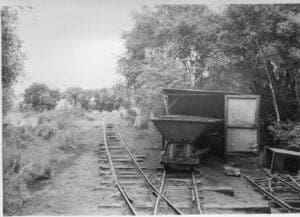
Possibly! Flitwick Water was sold at a shop in London (Bond Street) in the 1890’s and Victoria was known to take various ‘cures’.
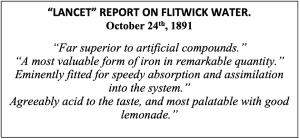
The mausoleum attached to Flitton Church houses monuments to the De Grey family, owners of Wrest Park. It was built by the 6th Earl of Kent in 1614 and was owned by the De Greys until they sold Wrest park to Jhom Murry in the 1920s. It is now owned by English Heritage and visit can be booked through their office at Wrest. The sculptures show a range of fashions in funerary monuments from Roman and Greek to Medieval & Victorian court robes.
The large D-shaped moat was dug by monks and surrounded a grange (medieval farm) which supplied food for Dunstable Priory, Flitwick church and the poor of the parish. The moat would have held fish for food and large numbers of oyster shells have been found in it. There was a chapel within the moated area and there would have been living quarters too. Around 2,000 years ago a large area around what is now Ruxox farm was a Roman industrial settlement. Many Roman artifacts have been found, including slag heaps and tools and there was a villa to the north east of the site. This figurine of Dea Nutrix, Roman goddess of childbirth, was found in a ditch between Ruxox & Flitton.
At the time of the ‘Enclosure Act’ in the 18th Century there was a lot of unrest across the country. At this time there was no specific boundary between the parishes of Maulden & Flitton as the river had no fixed course through the peat bog. It was here that local farmers grazed animals and cut turves on what had always been common land. In a letter from Hadley Cox, the vicar of Flitton, to the High Sheriff of Bedfordshire on 2nd June 1772 he says, “I am sorry to acquaint your Lordship that an alarm given us yesterday by a great number of people assembling on the Moor, with intention of interrupting the measuring and dividing of it.” Further letters speak of riotous behaviour from the people of Maulden, Flitton and Greenfield upon the Moor. In one Hadley Cox writes, “I make no doubt the insurgents of Maulden will renew their opposition and compel those of Flitton to join them.” And adds, “Nor will any force, I will venture to say short of a military one, be able to quell them, should they advance again in a more hostile manner than before.
If you ever wonder why much of the water in the drains in and around the moor has an orange colour it is this:
The water seeps up from the iron rich Greensand aquifer and gets into the water via a bio-mechanical process. A tiny mite browses the iron and then leaches it into the water as it dies. Ochre is also formed when iron rich pyritic soils are drained, allowing oxidation and precipitation of ferrous iron.

